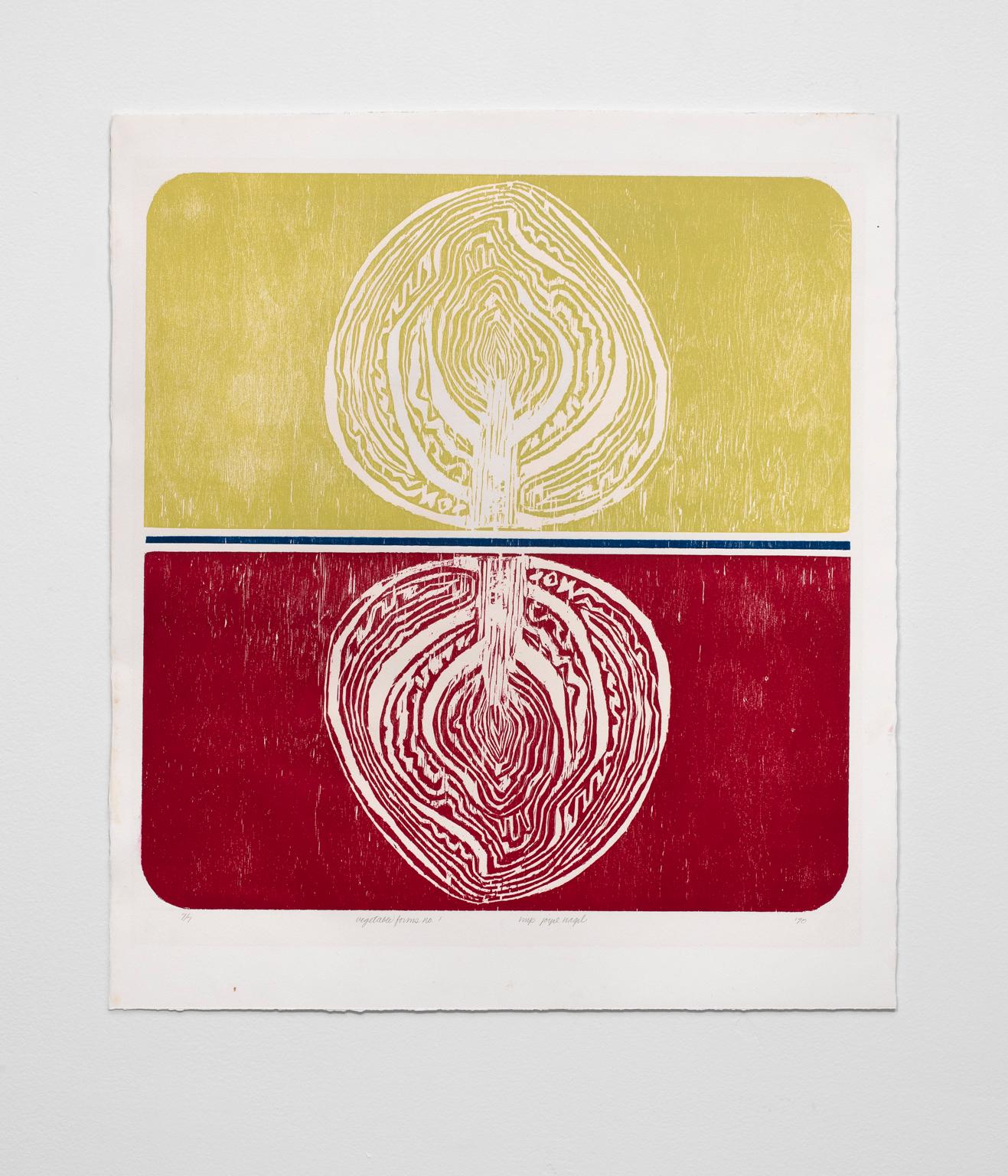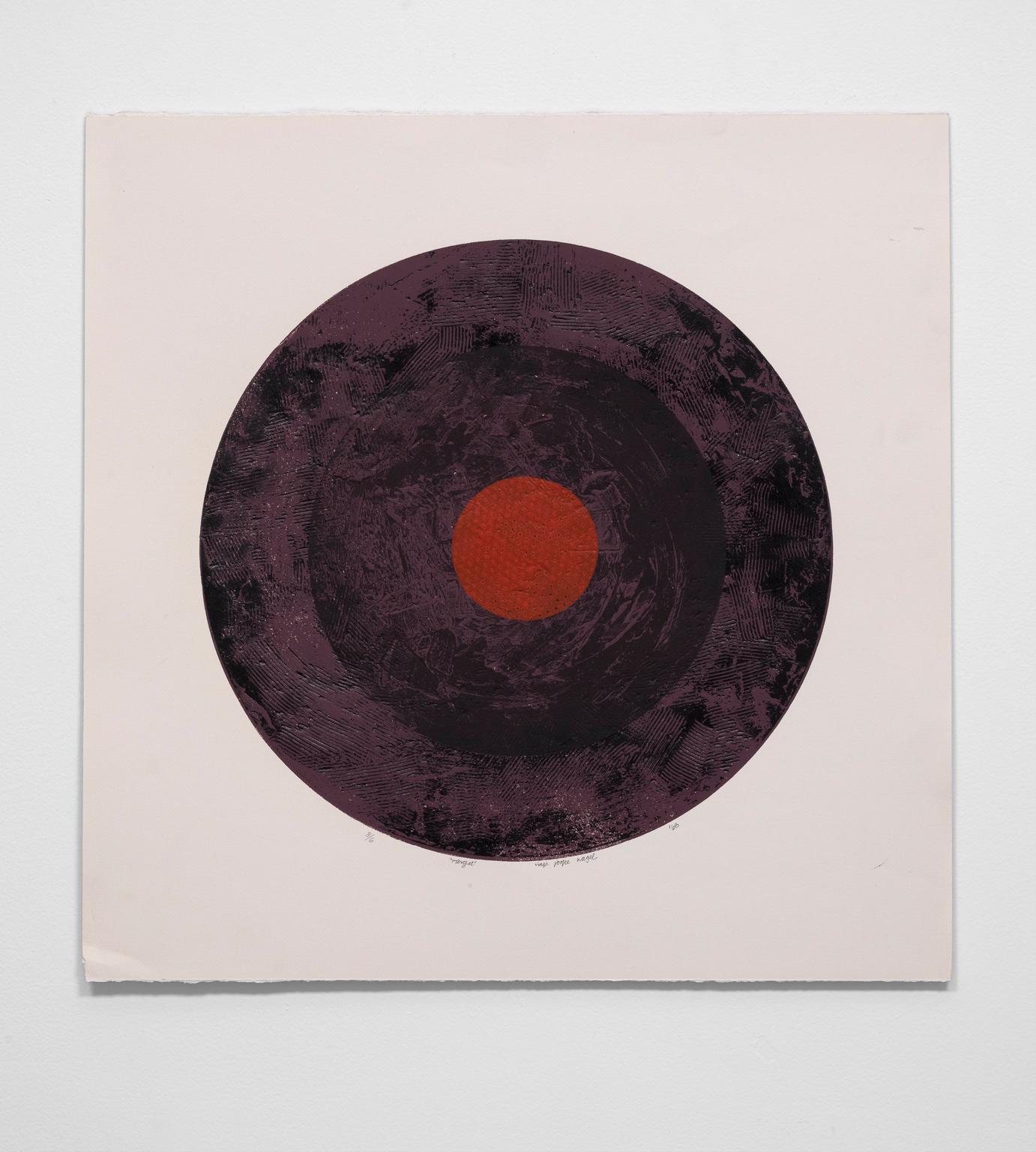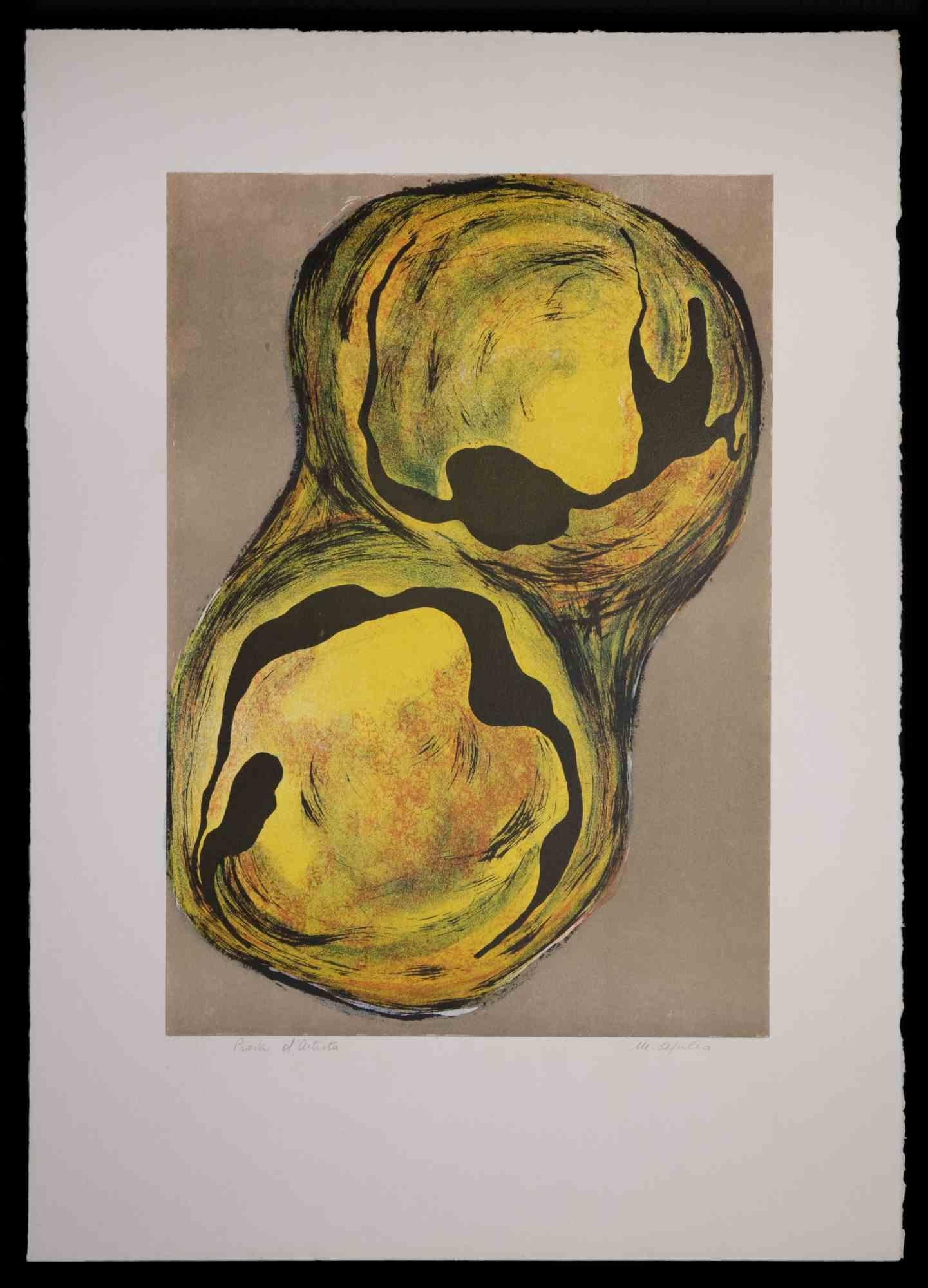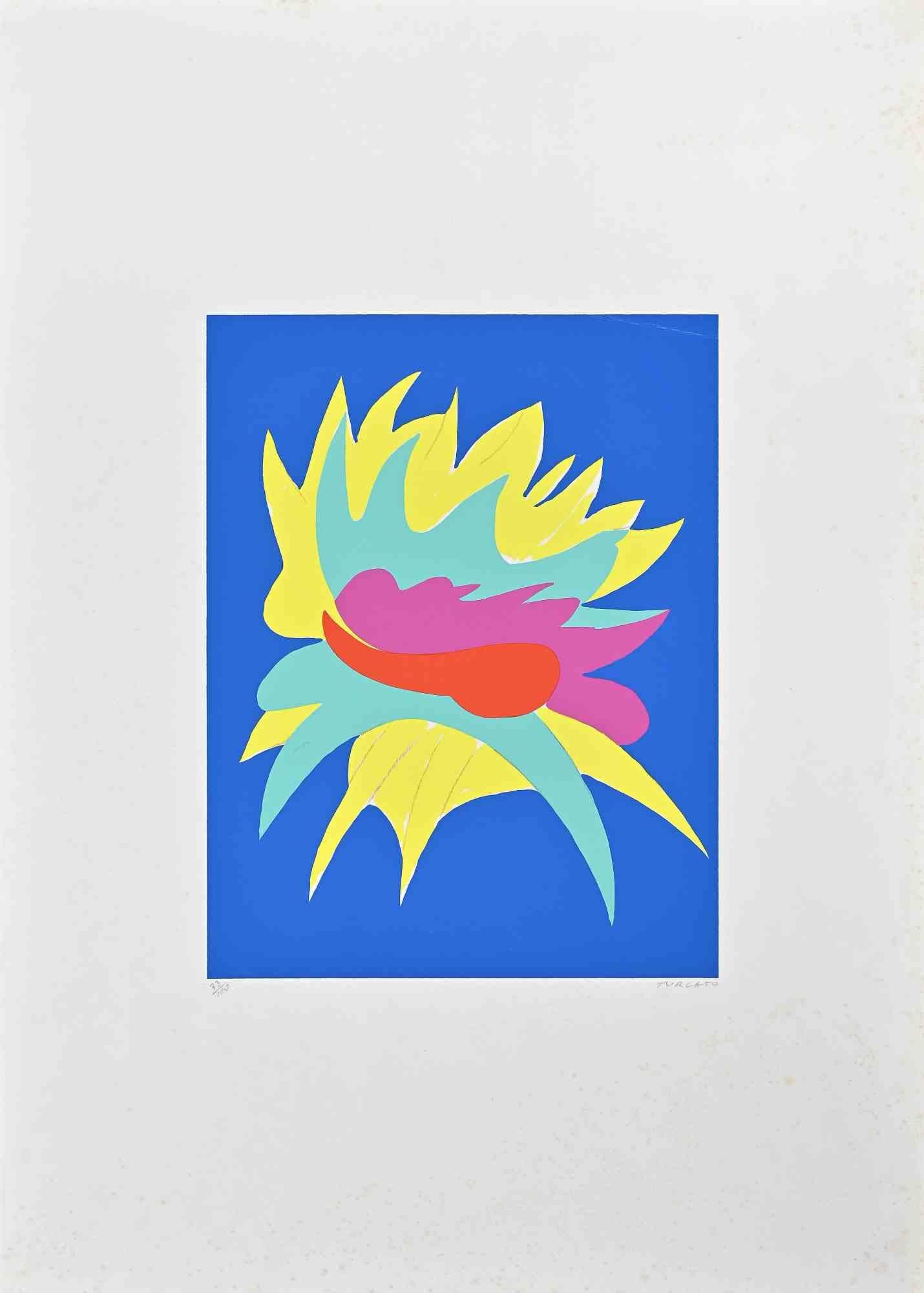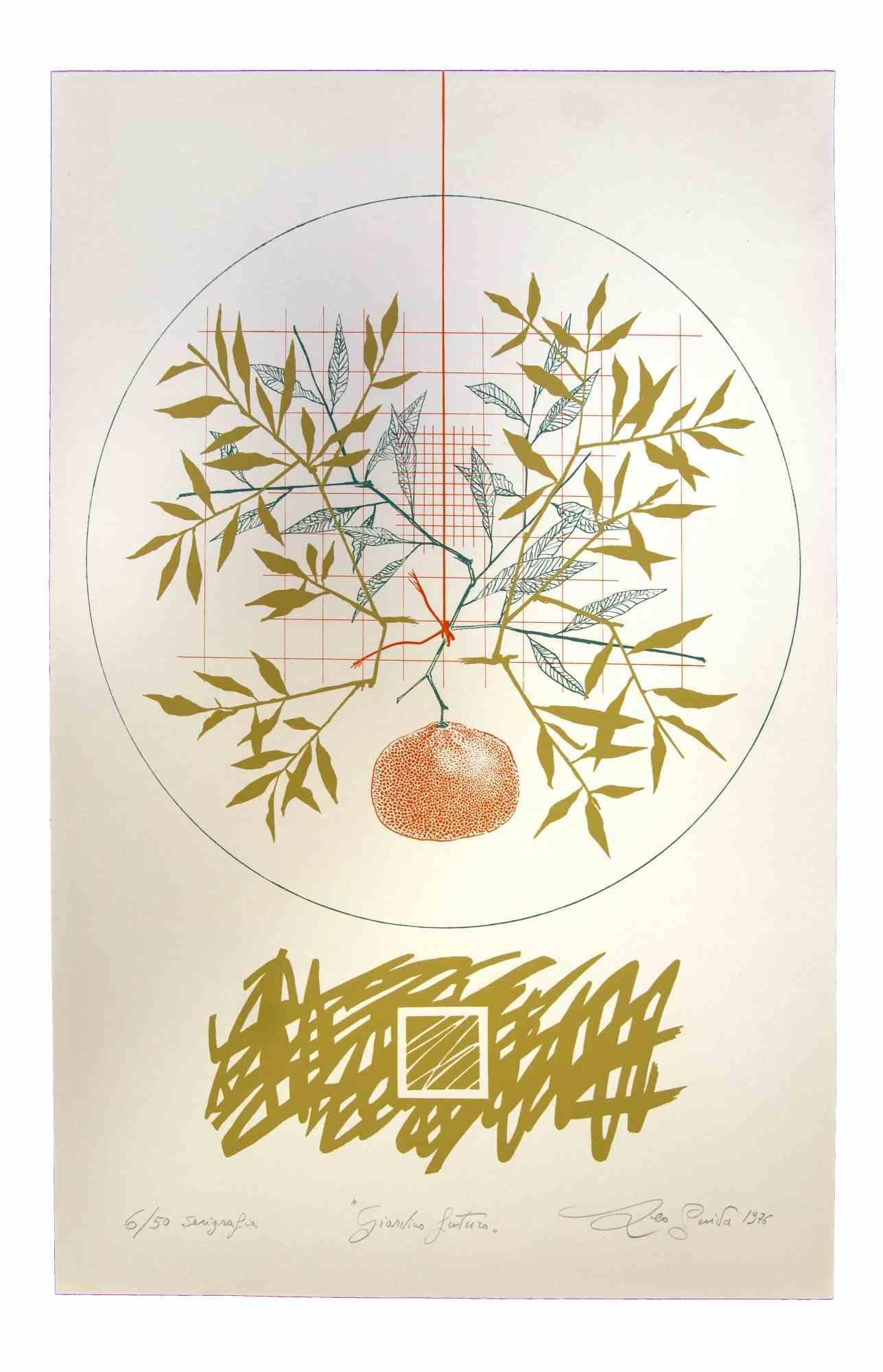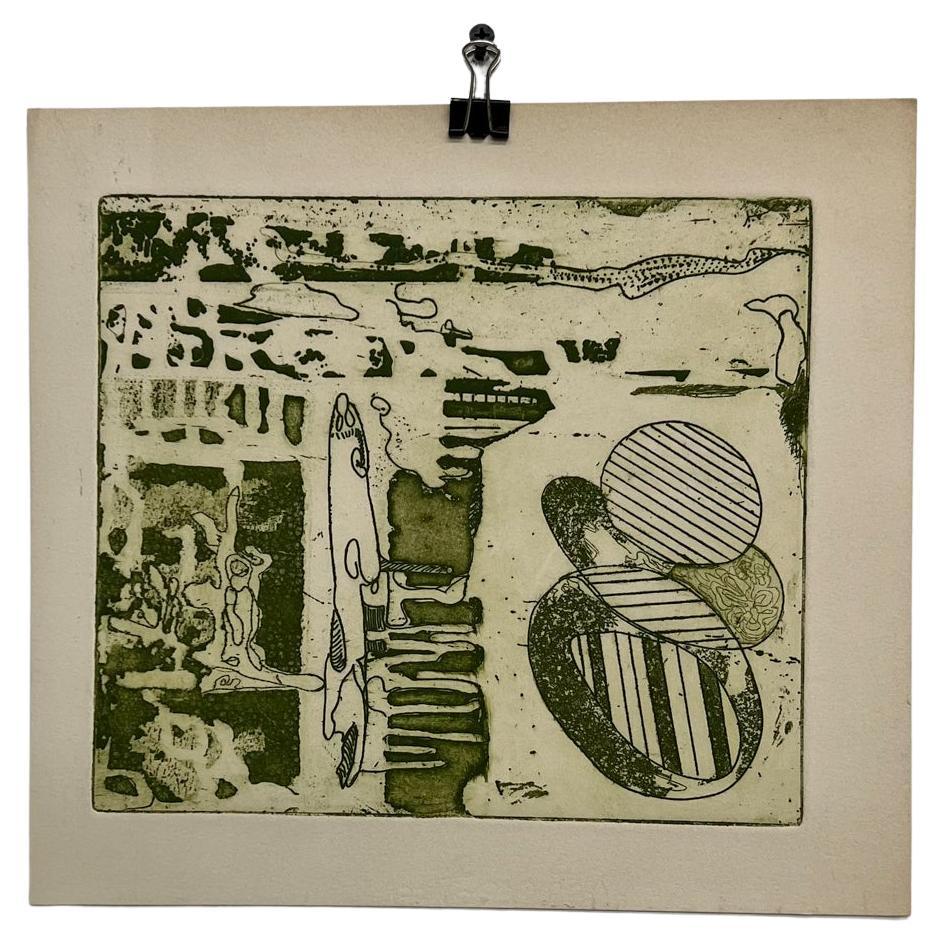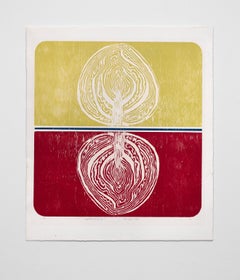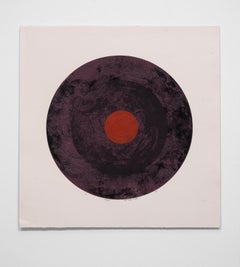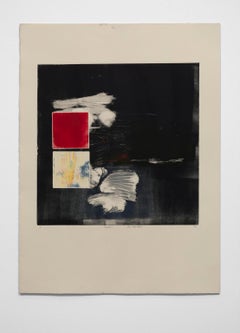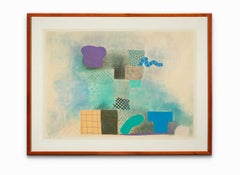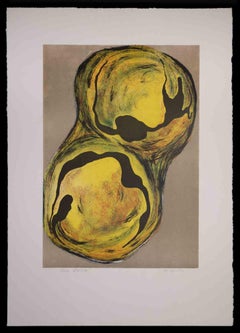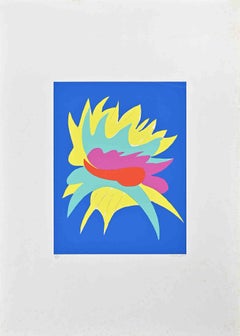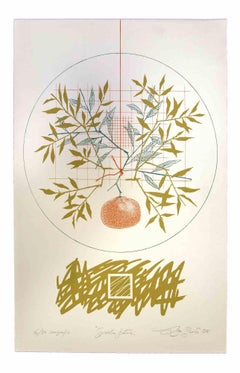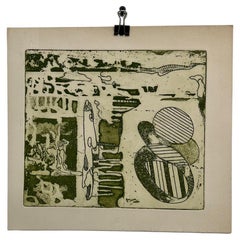Items Similar to Joyce T. Nagel Print "Vegetable Forms No. 9" "1st State" Signed Dated Ltd Ed
Want more images or videos?
Request additional images or videos from the seller
1 of 10
Joyce Tilley NagelJoyce T. Nagel Print "Vegetable Forms No. 9" "1st State" Signed Dated Ltd Ed1972
1972
$450
£349.92
€397.86
CA$648.32
A$708.86
CHF 370.60
MX$8,527.41
NOK 4,689.54
SEK 4,398.37
DKK 2,970.82
About the Item
"Vegetable Forms No. 9" "1st State" is a beautiful linear design woodcut of an artichoke. What is intellectually interesting is the fractal beauty of nature found in the artichoke. A fractal is a kind of pattern that we observe often in nature and in art. Whenever you observe a series of patterns repeating over and over again, at many different scales, and where any small part resembles the whole, that’s a fractal. The Artichoke is the perfect example in that the shape of the leaves repeat themselves and they are the same shape as the fruit itself. Fractals are exciting, not only for their mathematical or conceptual representation, but also for the fact that you can visualise the math—and it’s beautiful! This print is rendered in an intense green with a light blue color to delineate the intriguing linear element of the artichoke's leaves.
Joyce Tilley Nagel received a BS in Advertising Design from Rochester Institute of Technology and an MA in Printmaking from Wayne State University, Detroit, Michigan. She has worked as a freelance graphic designer and has been recognized nationally for her fine art pastels.
Joyce is, also, known as an enthusiastic and knowledgeable teacher with a sensitive approach to drawing, printmaking, oil and pastel painting. In the late 60’s Joyce was an instructor at the Birmingham Bloomfield Art Association. In the 70’s and 80’s she taught adults drawing, design, printmaking and pastel painting. In the late 80’s and 90’s, Joyce, along with her husband, Don Nagel, led travel groups, as artist/demonstrators, through Europe to Paris, Northern France, Giverny and Provence.
She is a past president of Birmingham Society of Women Painters and was on the Birmingham Bloomfield Art Association Board, where she organized many exhibitions (Prints & Plates), and did graphics and production for their monthly publications, exhibitions and events. During these years, Joyce worked as a freelance graphic designer. She worked through Cranbrook Press on Christ Church Cranbrook monthly communications.
According to Joyce, “In the 70’s, monoprints became popular and more fun to create than doing repetitive editions. Wiping the plate was an individual procedure that I enjoyed for both abstracts and real images. Thus, each print is unique.” Her collection of monoprints provides a classic snapshot of mid-century art and design.
Today, she and husband Don, also an artist, are semi-retired, living and still painting on Hilton Head Island in South Carolina.
About the Seller
5.0
Vetted Professional Seller
Every seller passes strict standards for authenticity and reliability
Established in 2014
1stDibs seller since 2019
108 sales on 1stDibs
Typical response time: 17 hours
- ShippingRetrieving quote...Shipping from: Detroit, MI
- Return Policy
Authenticity Guarantee
In the unlikely event there’s an issue with an item’s authenticity, contact us within 1 year for a full refund. DetailsMoney-Back Guarantee
If your item is not as described, is damaged in transit, or does not arrive, contact us within 7 days for a full refund. Details24-Hour Cancellation
You have a 24-hour grace period in which to reconsider your purchase, with no questions asked.Vetted Professional Sellers
Our world-class sellers must adhere to strict standards for service and quality, maintaining the integrity of our listings.Price-Match Guarantee
If you find that a seller listed the same item for a lower price elsewhere, we’ll match it.Trusted Global Delivery
Our best-in-class carrier network provides specialized shipping options worldwide, including custom delivery.More From This Seller
View AllJoyce T. Nagel Woodcut "Vegetable Forms No. 1" Signed Dated Ltd Ed
Located in Detroit, MI
"Vegetable Forms No. 1" is a bright fresh woodcut print of a mirrored halved cabbage. Nature's intricate design is fully appreciated and apparent in the captured tight crinkled and folded leaves. #7/7 Signed and Dated
Joyce Tilley Nagel...
Category
1970s American Modern More Prints
Materials
Woodcut
Joyce T. Nagel Collagraph "Earthcore" Signed Dated Ltd Ed
Located in Detroit, MI
"Earthcore" is an abstract of a familiar image ... a view of earth sliced in half usually as an explanation of the many layers of spaceship earth. This print is more than its title. It is rich in its depth of color and texture. Upon close inspection there is much activity on the surface which continually adds to its visual complexity.
The name given to this print process is “Collagraph” It is made by glueing different materials to cardboard and creating a kind of collage. During the inking process the ink will rub off surfaces that are smooth or higher and stay on surfaces that hold more ink, at edge and at lower points thus creating the image. To protect the plate through the printing process it’s sealed with one or more layers of shellac. A collagraph plate is quite sensitive and will be deformed by the pressure of the printing press.
Joyce Tilley Nagel...
Category
1960s Abstract Expressionist Abstract Prints
Materials
Paper, Ink
Joyce T. Nagel Monoprint Abstract "Dropout" Signed Dated
Located in Detroit, MI
"Dropout" is one of the monoprints that Joyce Nagel so enjoyed creating. This monoprint is a one-off abstract print. The arrangement of shapes and colors p...
Category
1980s Abstract Expressionist Abstract Prints
Materials
Paper, Ink
Robert Natkin Abstract Lithograph Signed Numbered
By Robert Natkin
Located in Detroit, MI
SALE ONE WEEK ONLY
Soft pastel colors in floating smudges lay between and around lyrical abstract geometric and organic forms giving a diaphanous color and shape harmony to the work...
Category
1990s Abstract Expressionist Abstract Prints
Materials
Lithograph
Joyce T. Nagel Monoprint "Spring/Daffodils" Signed Dated
Located in Detroit, MI
"Spring/Daffodils" captures the essence of the colors of spring and its meaning by choosing Daffodils, the first large common flower of the season that is so welcomed after a long hard mid-west winter. Flowers, also, are an iconic choice of subject matter for many artists from the Dutch Masters and their large vases of flowers to Alex Katz and his mammoth portraits of "flowers." Some of Manet's last paintings that were exquisitely rendered were of the common flowers lilacs and roses. Joyce Nagel...
Category
1980s American Modern Still-life Prints
Materials
Paper, Ink
"Untitled I", Abstract Aquatint Color Etching Lithograph, Signed and Numbered
Located in Detroit, MI
"Untitled I" is a work that displays James Hansen's intense colors and shapes of his abstract and surrealist style. This print made with etching and aquatints with hand-coloring on Arches paper pops with the illusion of three dimensions set against a muted background of esoteric shapes and symbols. The print is 32-3/4 x 25-3/4 inches and is signed and numbered from an edition of 30 by the artist. Numbered edition may not necessarily be number 12 as there are multiple prints in the possession of Collected Detroit.
James Hansen was born in 1951 in New Haven, Connecticut and spent most of his artistic career in Provincetown, Massachusetts where he befriended and worked with Paul Bowen, Claude Simard...
Category
1990s Abstract Prints
Materials
Etching, Aquatint, Lithograph
You May Also Like
Cellula III - Original Lithograph by Vito Apuleo - 1970s
Located in Roma, IT
Cellula III is an original lithograph, realized by Vito Apuleo in the 1970s.
Hand-signed on the bottom right. Artist's proof as hand written by the artist...
Category
1970s Abstract Abstract Prints
Materials
Lithograph
Abstract - Screen Print by Giulio Turcato - 1970s
By Giulio Turcato
Located in Roma, IT
Abstraction is a colored screen print realized by the contemporary artist Giulio Turcato in 1970s.
Hand-signed in pencil on the lower right.
Numbered on the lower left margin, edit...
Category
1970s Abstract Abstract Prints
Materials
Paper, Screen
Future Garden - Original Print by Leo Guida - 1976
By Leo Guida
Located in Roma, IT
Future Garden is an original manifesto realized by Leo Guida in 1976.
Edition 6/50.
Dated, numbered and signed.
Leo Guida (1992 - 2017). Sensitive to current issues, artistic mov...
Category
1970s Contemporary Abstract Prints
Materials
Offset
Mamie Troxell Organic Modern Abstract Artwork on Paper 1970s Signed
Located in Chula Vista, CA
Mamie Troxell organic Modern abstract artwork 1970s signed
Measures: 11.18 x 7.13 art 9 x 7.75
Preowned original vintage condition art
See i...
Category
Vintage 1970s Mid-Century Modern Prints
Materials
Paper
Abstract Flowers - Original Lithograph by Amintore Fanfani - 1972
By Amintore Fanfani
Located in Roma, IT
Abstract Flowers is an original lithograph realized by Amintore Fanfani in 1972.
Hand-signed and dated on the lower right. Numbered on the lower left. edition of 52/60 prints
The...
Category
1970s Abstract Abstract Prints
Materials
Lithograph
$290 Sale Price
35% Off
Composition - Original Print by Leo Guida - 1970's
By Leo Guida
Located in Roma, IT
Composition is an original etching and aquatint realized by Leo Guida in 1970s.
Good condition.
Mounted on a white cardboard passpartout .
Dated and signed.
Leo Guida (1992 - 20...
Category
1970s Contemporary Abstract Prints
Materials
Etching, Aquatint
More Ways To Browse
Vintage Artichoke
Pastel 80s
Mary Corita Kent
Miro Dog
Miro Homage To Miro
Miro Lithograph Galerie Maeght
Picasso Family
Pierre Clerk
Richard Chamberlain
Signed Miro Print
Sinead O Connor
Socialist Realism Art
Tristan Isolde
Wifredo Lam On Sale
70s Photograph
A Y Jackson
African American Artists Lithographs
Agam Serigraph
